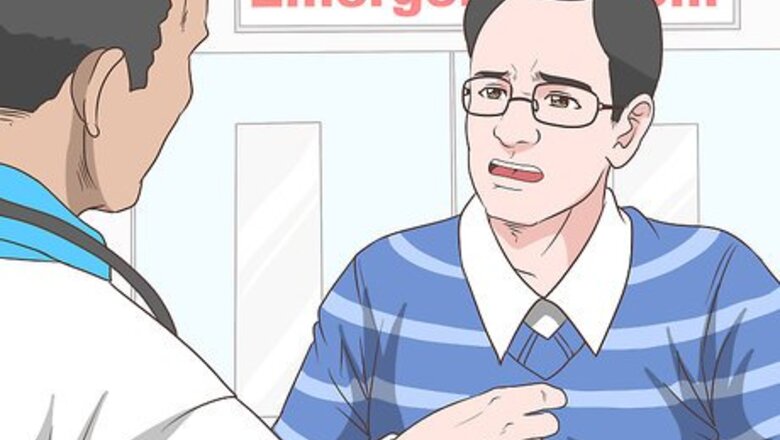
views
X
Trustworthy Source
Cleveland Clinic
Educational website from one of the world's leading hospitals
Go to source
Generally, broken ribs occur after a direct blow to your chest or torso after an accident, fall, or hard hit while playing a contact support. Experts say you can often manage a mild rib injury at home with rest, ice, and over-the-counter painkillers.[2]
X
Research source
However, visit your doctor to make sure your injury doesn't require medical treatment.
Confirming Your Rib Injury

Visit the emergency room for treatment. If you've experienced trauma to your chest or torso that's causing significant pain, particularly during deep breathing, then you may have broken a rib or two. This can be associated with more severe injury as well, so it's important you get medical attention. Sometimes a "crack" is heard or felt when a rib breaks, but not always, especially if it occurs where the cartilaginous end-point of the rib attaches to the breast bone (sternum). It's important to seek medical treatment after a significant rib injury because if a rib fractures into sharp pieces (as opposed to a hairline crack), then the risk of injury to your lungs, liver, spleen is much greater. The doctor will verify the type of rib fracture and make recommendations accordingly. Chest x-rays, CT scans, MRI and diagnostic ultrasound are tools that your doctor may use to better understand your rib injury. Your doctor will likely give you a prescription for strong painkillers or anti-inflammatories if your pain is severe, or recommend the use of over-the-counter varieties at home if your pain is tolerable. A potentially fatal complication related to a badly broken rib is a punctured or collapsed lung (pneumothorax). A broken rib can also lead to pneumonia.

Talk to your doctor about a corticosteroid injection. If the broken rib is stable, but causing you moderate-to-severe discomfort, your doctor may suggest an injection of steroidal medication, especially if torn cartilage is involved. A corticosteroid injection near the injury can quickly reduce inflammation and pain, allow for easier breathing and increase upper body mobility. Potential complications of corticosteroid injections include infection, bleeding, local muscle / tendon atrophy, nerve damage and weakened immunity. Another type of injection your doctor may administer is an intercostal nerve block. The medication numbs the surrounding nerves and stops the sensation of pain for about six hours. The vast majority of people with broken ribs do not need surgery — they heal quite well on their own with conservative (non-invasive) care at home.
Treating Your Ribs at Home
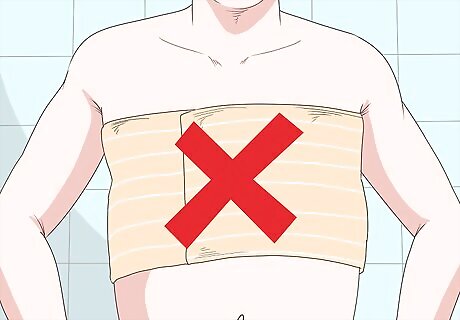
Do not wrap your ribs. In the past, doctors would routinely use compression wraps to help splint and immobilize the area around broken ribs, but this practice has fallen out of favor due to the increased risks of lung infection or pneumonia. Do not attempt to wrap or bandage your ribs.
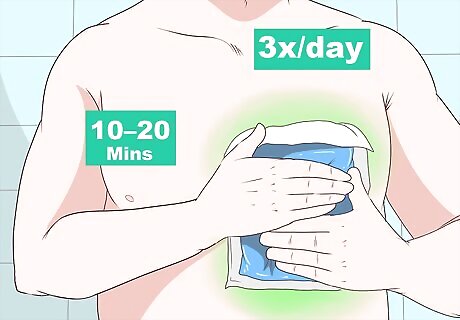
Put ice over the fractured rib. Apply an ice pack, frozen gel pack or bag of peas from the freezer onto your rib injury for about 20 minutes every hour you are awake for the first two days, then reduce it to 10 – 20 minutes three times daily as needed to reduce pain and swelling. Ice causes blood vessels to constrict, which reduces inflammation, and it helps to numb the surrounding nerves. Cold therapy is appropriate for all forms of broken ribs and essentially any musculoskeletal injury. Wrap the ice pack in a thin cloth before applying to the injured area to reduce the risk of ice burn or frostbite. In addition to sharp pain with breathing, you're likely to also have moderate tenderness and swelling over the fracture site and possibly some bruising to the surrounding skin, which signifies some damaged internal blood vessels.
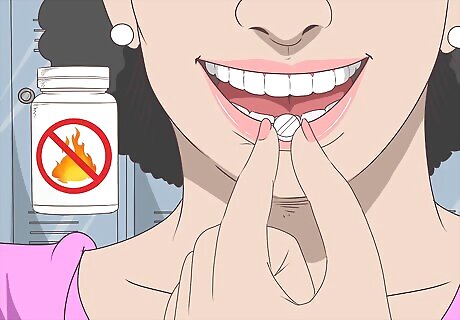
Take over-the-counter medications. Over-the-counter non-steroidal anti-inflammatories (NSAIDs) such as ibuprofen (Advil), naproxen (Aleve) or aspirin are short-term remedies to help combat the pain and inflammation related to your broken rib(s). NSAIDs don't stimulate healing or speed up the rate of recovery necessarily, but they can provide comfort and allow you to do basic activities of daily living or even return to work after a few weeks if your profession is mainly sedentary. Keep in mind that NSAIDs can be hard on your internal organs (stomach, kidneys), so try not to use them on a daily basis for more than two weeks. Follow the package directions for proper dosage. Children younger than 18 years should never take aspirin because it’s associated with Reye’s syndrome. As an alternative, you can take over-the-counter painkillers such as acetaminophen (Tylenol), but they don't impact inflammation and are harder on the liver.
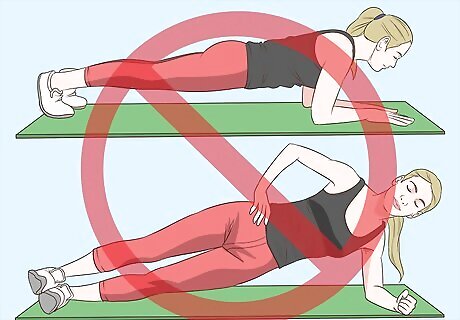
Avoid movements with your torso. Some light exercise is a good idea for most musculoskeletal injuries because movement is needed to stimulate blood flow and healing. However, for the first few weeks, avoid cardio exercises that significantly increase your heart and breathing rates because that can irritate and inflame your broken rib. Furthermore, minimize the amount of rotation (twisting) and lateral flexion of your torso while your rib is healing. Walking, driving and computer work should be fine, but avoid most strenuous household chores, jogging, lifting weights and playing sports until you can take a deep breath with very little or no pain. Take a week or two off work if you need to, especially if your job requires physical labor or lots of jarring movements. Ask your family and friends for help around the house and yard while you recover. Avoid lifting, and check with your doctor whether or not you should drive. You'll invariably need to cough or sneeze at some stage after you break your ribs, so consider holding a soft pillow against your chest to cushion the blow and minimize the pain.
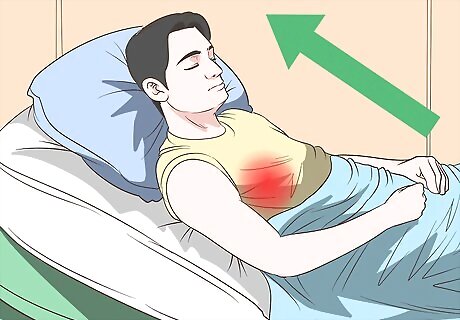
Adapt your sleeping position. Broken ribs are particularly problematic in the night during sleep, especially if you sleep on your stomach, sides or roll around frequently. Probably the best sleeping position for your broken rib(s) is on your back (supine) because it puts the least amount of pressure on them. In fact, it may help to sleep more upright in a comfortable reclining chair for the first few nights until some of the inflammation and pain subside. You can also prop yourself up in bed with cushions behind your back and head. If you need to sleep in more of an upright position for a few nights or more, then don't neglect your low back. Placing a pillow underneath your flexed knees will take pressure off your lumbar spine and help to prevent low back pain. To prevent rolling onto your sides during the night, place a body pillow on either side of you for support.

Eat well and take supplements. Broken bones need the necessary nutrients in appropriate amounts to heal properly, so eating a balanced diet rich in minerals and vitamins is a great strategy. Focus on consuming fresh produce, whole grains, lean meats, dairy products and lots of purified water. Supplementing your diet with extra nutrients may also be helpful to accelerate the healing of your broken rib, so consider adding some calcium, magnesium, phosphorus, vitamin D and vitamin K. Rich mineral sources include cheese, yogurt, tofu, beans, broccoli, nuts and seeds, sardines, salmon. On the flip side, avoid consuming things that may hinder bone healing, such as alcohol, soda pop, fast food and refined sugars. Smoking also slows the healing time of broken bones and other musculoskeletal injuries.

















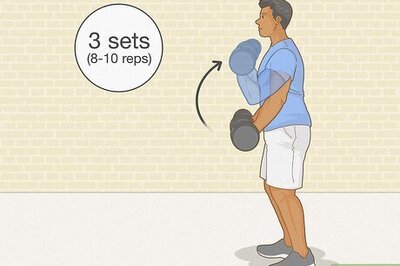

Comments
0 comment